Their names are a sign of quality and are familiar even to those who are far from the world of art. each of the Famous painters It was a special phenomenon of its time. Someone has the role of a pioneer, another attracts by the mystery of it, this other surprises with such a different realism.

Famous painters
Artists are people who can speak publicly with society in the language of images and visual forms. However, its popularity and relevance does not seem to depend at all on talent alone. Who were the most famous painters in history?
Albrecht dürer
The German painter Albrecht Dürer (Albrecht Dürer) was one of the first to approach central perspective and chose a highly schematic image structure and symbolic representations for his paintings, such as the Rosary Festival. The self-portrait of him is world famous. The shimmering curls and fabric illusion of his coat still amaze millions of people today.
In addition to painting, he made numerous drawings and watercolors of nature, such as the Young Hare. However, he owes his breakthrough as an artist to his woodcuts and copper engravings, which were distributed as book illustrations throughout Europe.
Paul Gauguin
Paul Gauguin was born in Paris in 1848. He is one of the most exotic famous French painters. Before emigrating to French Polynesia, where he remained until his death, he was one of the great painters of the Pont-Aven school. His style is inspired by impressionism and Japanese printmaking, and his large paintings are now displayed in major museums such as the Musée d'Orsay. The famous painter died in the Marquesas Islands in 1903.
Miguel Angel Buonarroti
Michelangelo, or actually Michelangelo di Lodovico Buonarroti Simoni, was born in Caprese in 1475 and died in Rome in 1564. He is considered part of the Italian High Renaissance, although he did shape this era. The artist is particularly known for his religious works, especially, of course, for the painting of him on the ceiling of the Sistine Chapel. Subsequently, his technique and style are taken up, thus giving rise to the beginning of mannerism.
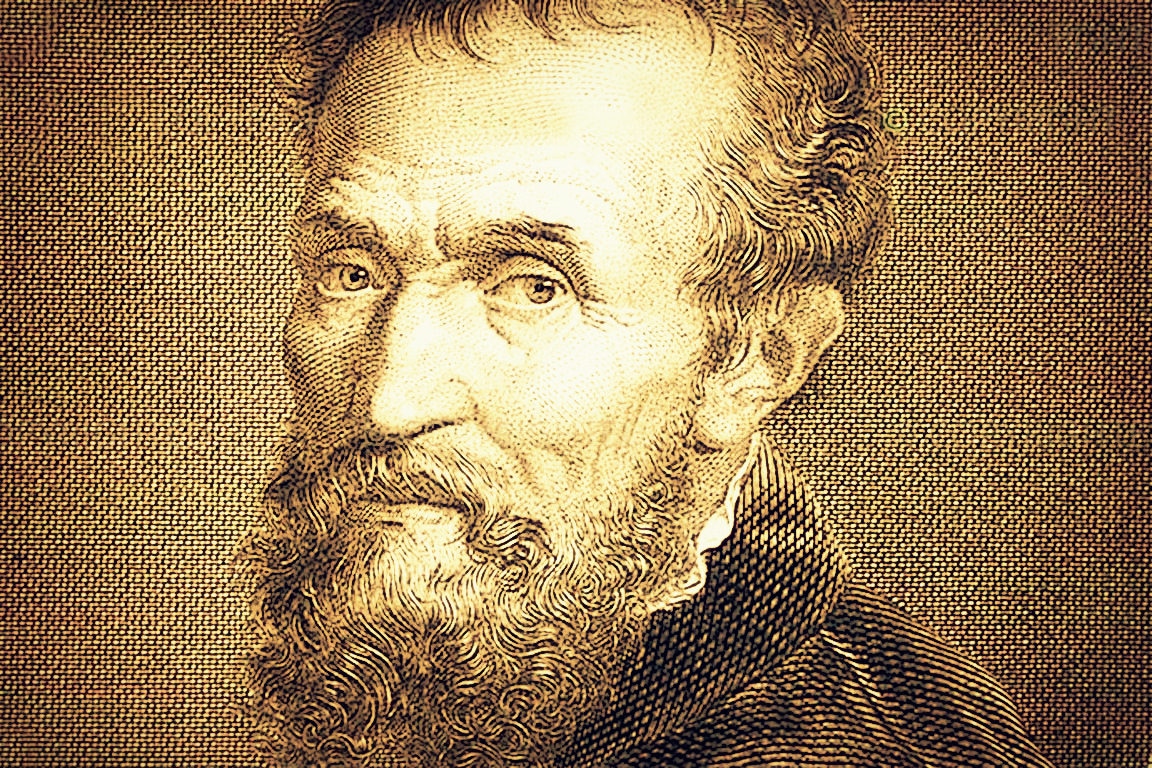
In the Renaissance era, instead of eternal damnation, the beauty of creation came to the fore. Miguel Ángel Buonarroti, known during his lifetime, also dedicated himself to it. He combined anatomical knowledge with a love of perfection.
The Pope himself commissioned a gigantic ceiling painting of the creation of the world for the Sistine Chapel in Rome. Probably the most famous motif in the world is the Creation of Adam, in which Adam is brought to life at the touch of God's fingers.
Michelangelo also managed to do the same as a sculptor, being able to bring hard marble blocks to life. Like the brave-looking young David, who offers the giant Goliath his curly forehead. As a rival of Leonardo da Vinci, Michelangelo was also considered a Renaissance man for his skills in sculpture, painting, and poetry. His influence and contribution to the development of Western art is unparalleled until now.
Edouard Manet
His well-known painting "Breakfast on the Grass" is known all over the world today. Edouard Manet's father actually wanted him to study law, but Manet refused and began studying painting with Thomas Couture. He sets the standard in the Impressionist movement, especially for the motifs he chooses to paint: portraits, landscapes, still lifes or Parisian life.
Although he surrounded himself with intellectuals (such as Émile Zola or Charles Baudelaire), his contemporaries criticized him for a long time. His creative path, as befits the path of a real artist, was not the simplest: his paintings caused controversy and scandals, in the 1860s it was exhibited in the so-called Hall of the Outcast. It was an alternative exhibition for artists who were not accepted at the official Salon in Paris.
Such was the fate of his work Olympia, which shocked the public. They wrote that the protagonist of the canvas looks at the viewer with such defiance and holds her left hand as if she had a bag in this hand, and the woman herself does not deeply care what they think of her. The image was considered too flat and that its plot was vulgar. Who would have thought that after one hundred and fifty years this canvas will become one of the most recognizable in the world.
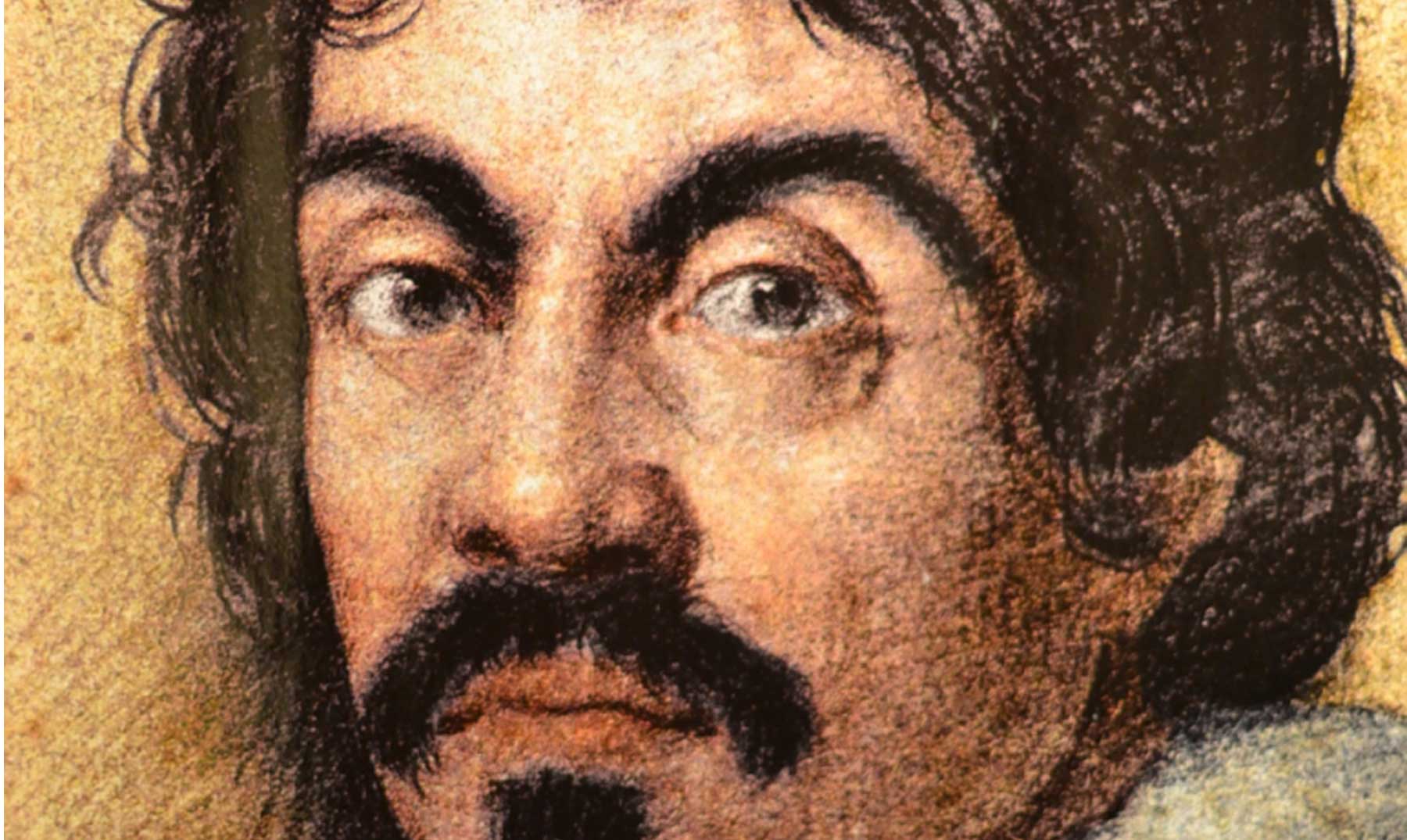
Michelangelo Merisi from Caravaggio
The Italian barocco artist Caravaggio is undoubtedly one of the most famous painters of all time. His masterpieces, such as the vocation of Saint Matthew, are characterized by strong light / dark contrasts and often thematize religious or allegorical scenes, at the same time quite brutal: from the scourging of Christ to Judith, who resolutely cut off the head of Holofernes .
He found many successors, such as the equally talented but less well-known painter Artemisia Lomi Gentileschi. She broke with the tradition of Renaissance artists who were guided by the beautiful ideal. Her models weren't bridesmaids, but protesters and drunks with dirty feet. This new style was provocative and received much recognition.
Numerous artists are inspired by him (as mentioned, also Rembrandt), so a style of his own that bears his name emerges from him: Caravaggism. His paintings, sometimes very realistic, have shaped his contemporaries and future generations.
Paul Cézanne
Paul Cézanne (1839-1906) is known to many as the father of modern painting, although he actually began his career as a banker. Finally, in Paris, his talent as a painter comes to the fore and he seeks his place in the art world. Paul Cézanne is best known for his landscape paintings of Aix-en-Provence, where he spent his childhood.
Originally from Aix-en-Provence, Paul Cézanne stands out as one of the greatest modern artists. His art makes the link between the more traditional styles of the XNUMXth century and the more avant-garde styles of the XNUMXth century. Being part of the Post-Impressionist movement, he developed his own style and influenced, as well as many contemporary artists, the development of later movements.

His approach to pictorial representation is based on a constructive method that consists of combining the planes of the objects to create a set of great fullness. His idea would be taken up later by Picasso and Braque. Cézanne himself was inspired by the French Impressionist painters, applying to see objects as a set of forms. He sticks both to the visual perception of his work and to the subject addressed.
By painting the same subject several times (apples, oranges, mountains) the artist manages to perfect his technique. He studies the effects of light and perspective, looking at how they bring out different facets of objects. These are reproduced by color planes that reveal the geometric components of the objects.
By dissociating form through the game of abstraction, the painter tries to capture the change that objects experience in relation to their configuration in space. Cézanne's revolutionary ideas in the way of treating the subject and the intermediary that is the artist will influence the expressionists, the cubists and even the futurists.
Diego Velazquez
Las Meninas is one of the most famous images in art history and Velázquez's masterpiece. Diego Velázquez painted the daughter of Philip IV with her maidens and immortalized himself on the edge of the painting as court painter to the Spanish royal family. He introduced the Pope and even gave some dignity to the court dwarfs.
Even in his play The Surrender of Breda, he demonstrated diplomatic skill. Instead of the victory of the Spanish troops over the Netherlands, he shows a friendly handover of the keys to the city. In his compositions it can also happen that the back of a horse is extended towards the viewer, as if he were an eyewitness to the scene.
This can be seen particularly beautifully in the snapshot of a spinning wheel in his painting The Fable of Arachne, better known as The Spinners.
Auguste Renoir
Auguste Renoir (1841-1919), whose full name was Pierre-Auguste Renoir, is a painter who has been admired for his works since the end of the XNUMXth century. Originally, it can be assigned to the Impressionist movement, but he moved away from it and paints more and more realistic pictures.
Nudes, portraits, landscapes or even still lifes: Renoir is an accomplished and versatile painter who allows himself no break. Even in the last years of his life, when he suffered from severe rheumatism and could no longer move many parts of his body, he continued to paint by strapping his brushes to his wrists.
The French artist is well known for his depictions of female sensuality and his cult of beauty. One of his most famous works is Dance at the Moulin de la Galette (1876), which, in typical Impressionist fashion, captures the essence of an open-air party on a Parisian Sunday night, where city dwellers could drink, dance, chat and have fun.
His later works favor traditional themes, portraiture, or figurative compositions. Despite these changes, Renoir remains faithful to the representation of the nude. Her very sensual approach to femininity is inspired by Rubens. The end of his career will be marked by a fairly prolific production of female nudes. The theme change responds to a style change.
Jan Vermeer
In the 2003th century, the so-called Golden Age, the art trade flourished in the north of the Netherlands. Painters such as Rembrandt, Van Delft, and Jan Vermeer (Johannes Vermeer) became popular portraitists. The latter was able to amaze his viewers with his girl with the pearl earring. In XNUMX a movie based on the mysterious portrait of him was even released.

Images such as gentlemen and ladies drinking wine or the much-discussed allegory of painting can be seen today as historical testimonies about clothing and the world of people. It's not just about light and bright colors, but above all about the eye for detail and focus in everyday life. Historical events had to share the image with normal people, craftsmen, maids, even drunks.
Jan Vermeer was another Dutch painter who specialized in depicting the interiors of low-income houses and middle-class life. Although he was not recognized during his lifetime, his work was rediscovered in 1860. Later, some of his paintings were wrongly attributed to other artists, but the true author was soon identified thanks to the painstaking work of art researchers and historians.
To date, thirty-four known works, belonging to Vermeer's brush. The most famous of his paintings is "Girl with a Pearl Earring" (1665). The painting attracts the alert and anxious look of a girl dressed in strange clothes, as well as a large shiny earring, which is usually considered a pearl.
Henri Matisse
Henri Matisse was born in the south of France in 1869. Actually, he should have taken over the parental farm, but Matisse decided to study law in Paris. In 1889 he worked for a short time as a paralegal and at the same time took early morning drawing classes at the École Quentin de la Cour.
In 1890 he really started painting and wanted to prepare for the entrance exam at the École des Beaux-Arts, but he did not pass it. Matisse spent the summer of 1905 with André Derain and together they developed a new style that would go down in art history as Fauvism.
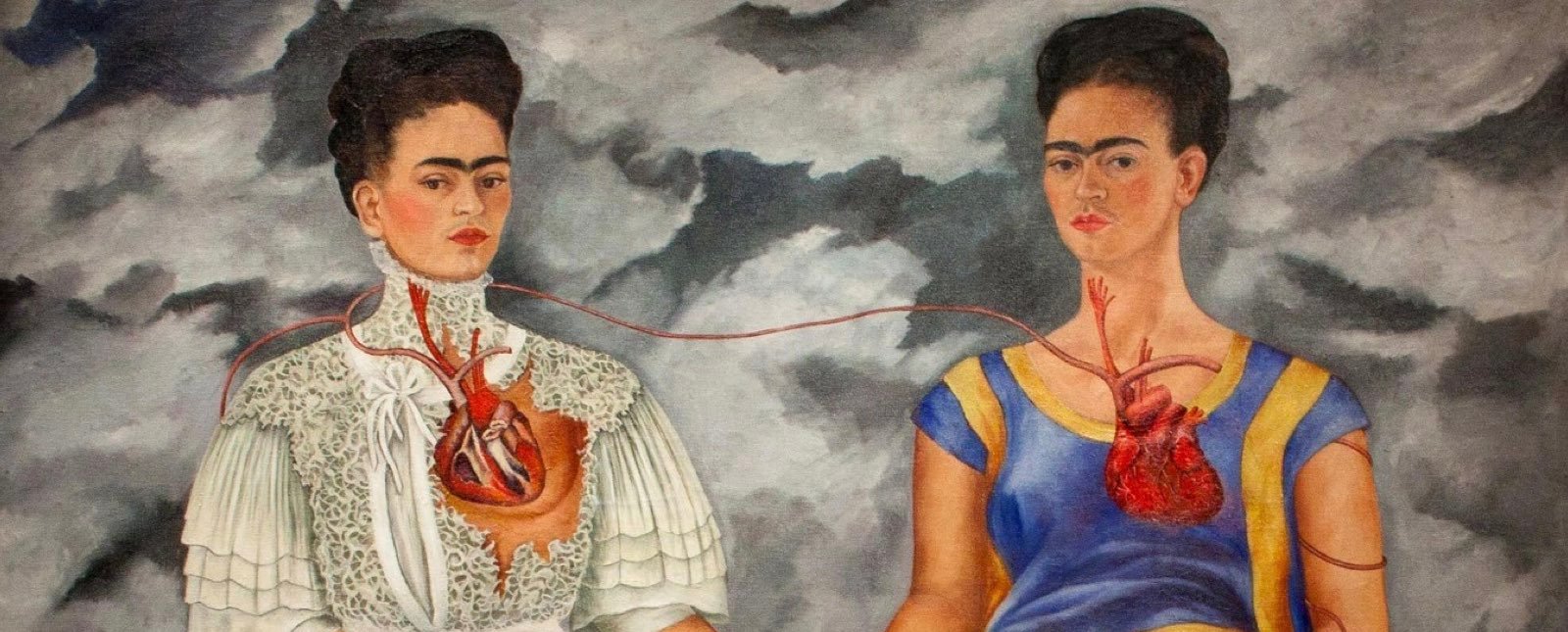
Frida Kahlo
Women who worked as artists are mostly fringe figures in older textbooks. One who has made her way into the male domain is Frida Kahlo. The Mexican is known for the vivid and colorful self-portraits of her.
His images speak passionately and emotionally about pain and willpower. She processed her traumatic experiences in her paintings, her serious bus accident (El pilar roto), her miscarriages, and her heartache (Las dos Fridas) with her husband Diego Rivera.
Feminists celebrate them for portraying their feminine experiences. In her home country, she is an icon who has brought the local culture to Europe. There she found great admiration among the surrealist group around André Breton. Some of her most famous works are Self-Portrait with a Thorn Necklace and a Hummingbird (1940). They are most notable as an example of his free use of symbolism. The spiked collar and lifeless hummingbird may have symbolized her inner agony.
Edvard Munch
Edvard Munch was born in Loten, Hedmark, Norway in 1863 and died in Oslo in 1944. He is one of the famous modern painters and is considered a pioneer of the expressionist direction of painting in the modern art era. He is known for the psychological themes and nuances of him, which were heavily influenced by XNUMXth century symbolism. His work greatly influenced German Expressionism in the early XNUMXth century.
The artist Edvard Munch is known outside the art world primarily for his painting "The Scream." However, it is actually a series of different images depicting the same motif. The Scream (1893-1910) has four separate versions in two different versions: oil and pastel.
The painting is remarkably painful and stark, but nonetheless tasteful in color, and is depicted in a very plain face with petrified emotion against a bright orange background. The Scream was painted after Munch walked home one night and he turned around: the red sunset he saw surprised him.
Munch's return route passed through the slaughterhouse and the hospital for the mentally ill, where the artist's sister was staying. Contemporaries wrote that the moans of patients and the cries of dead animals were unbearable. The Scream is believed to have become a kind of prophecy for XNUMXth century art, imbued with motifs of loneliness, despair, and existential nightmare.

The image or motif "The Scream" by Edvard Munch was taken up many times, for example also presumably for the mask of the well-known "Scream" film series. Consequently, there are also various merchandising items that are probably better known today than the artist himself.
Claude Monet
Renoir, Degas, Cezanne, Manet, Pissarro and above all Monet are among the famous painters in the world. Monet's impressionistic artistic style gives its name to the new artistic movement of the early nineteenth century, the so-called "Impressionism". Natural landscapes, color and impressions of light were always in the foreground in his works. This also had an effect on the impulsive painting style and the touch-like paint application.
Claude Monet, often referred to as one of the founders of Impressionism, was a French painter and one of the most brilliant and talented pioneers of the French Impressionist movement. In fact, the very term "impressionism" was adopted after he presented a work called Impression, rising sun.
Monet is considered the most prominent representative of Impressionism. He devoted himself to this style throughout his life, where the main characters are light and color, the lines disappear and the shadows can be blue. His Rouen Cathedral shows how an object changes if you look at it through the sun's rays. The cathedral trembles, lives in the rays.
Monet experimented a lot with the strokes to convey not so much the nature as the impression of it and it was in this that he saw the truth. His most famous work is Les nymphéas (The Water Lilies) a series of two hundred and fifty paintings that represent a garden in the French artist's house in Giverny, France. This series was the main direction of the artist's work during the last thirty years of his life.
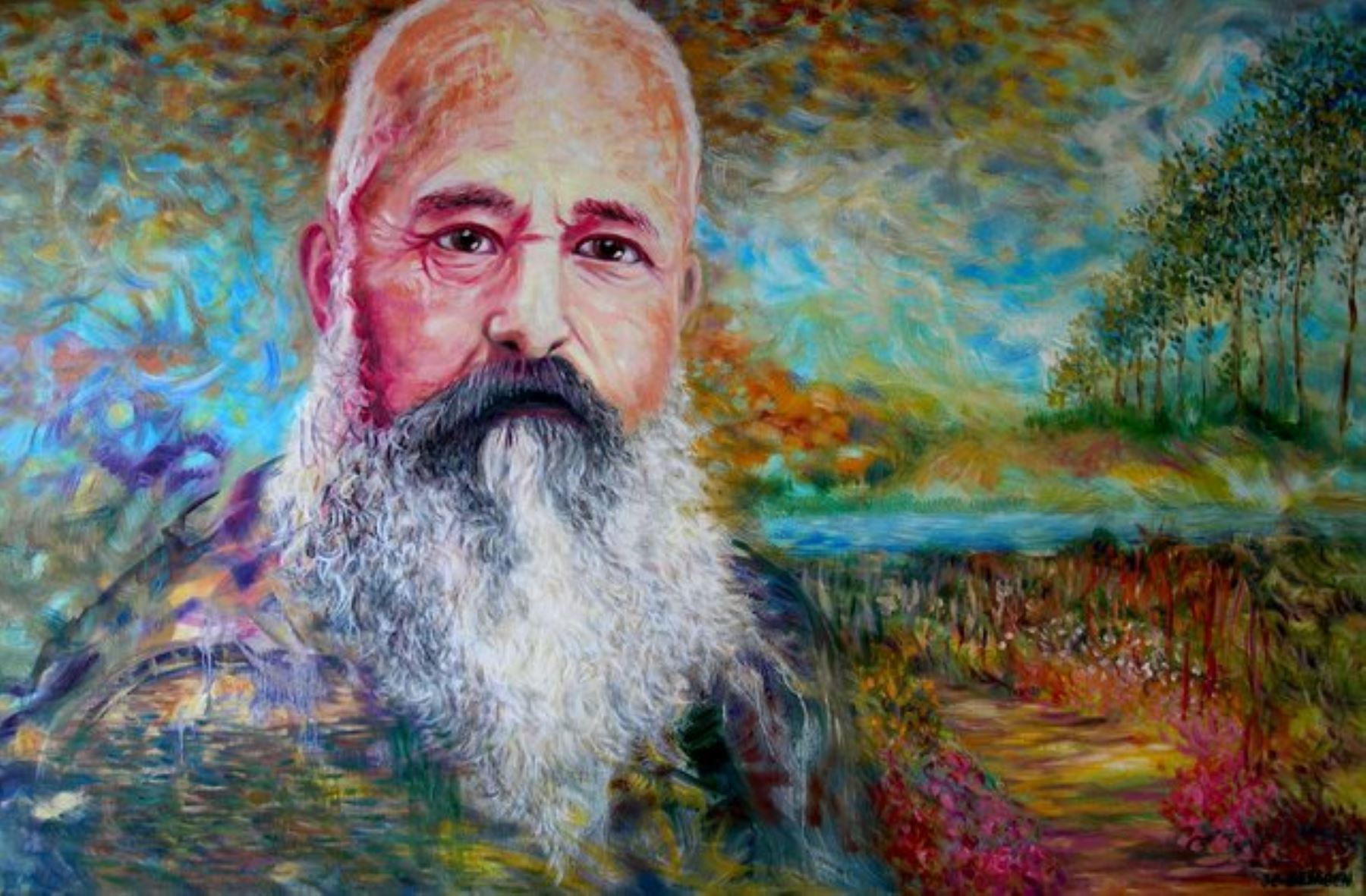
You can really only see many images, such as the famous water lilies, breakfast in the country or the view of Rouen Cathedral from a distance, when the individual color points in your eye result in an image. He was born in Paris in 1840 and died in Giverny in 1926.
Rene Magritte
René Magritte was a Belgian surrealist painter noted for using household items to convey his ornate perception of the everyday world. He was also known for creating works that make the viewer think, encouraging them to break with preconceived notions of reality.
One of his famous works that adheres to this principle is The Treachery of Images (928-1929), which is a smoking pipe with the inscription “Ceci n'est pas une pipe” (This is not a pipe). And it's not really a pipe simply because it's just an image of it. This technique and style of changing what we know to be reality was common to all of his works and ideas.
Edgar Degas
Edgar Degas (1834 – 1917) initially studied law at the wish of his father, but later returned to his great love: painting. He did not learn to paint in a painting course at an art school, but by copying the great works of the Louvre.
As a general rule, it is counted as part of the Impressionist art movement, but this classification remains controversial. It does not follow all the characteristics of this current, but it allows itself some avant-garde liberties. The painter is particularly known for the portraits and dance scenes of him.
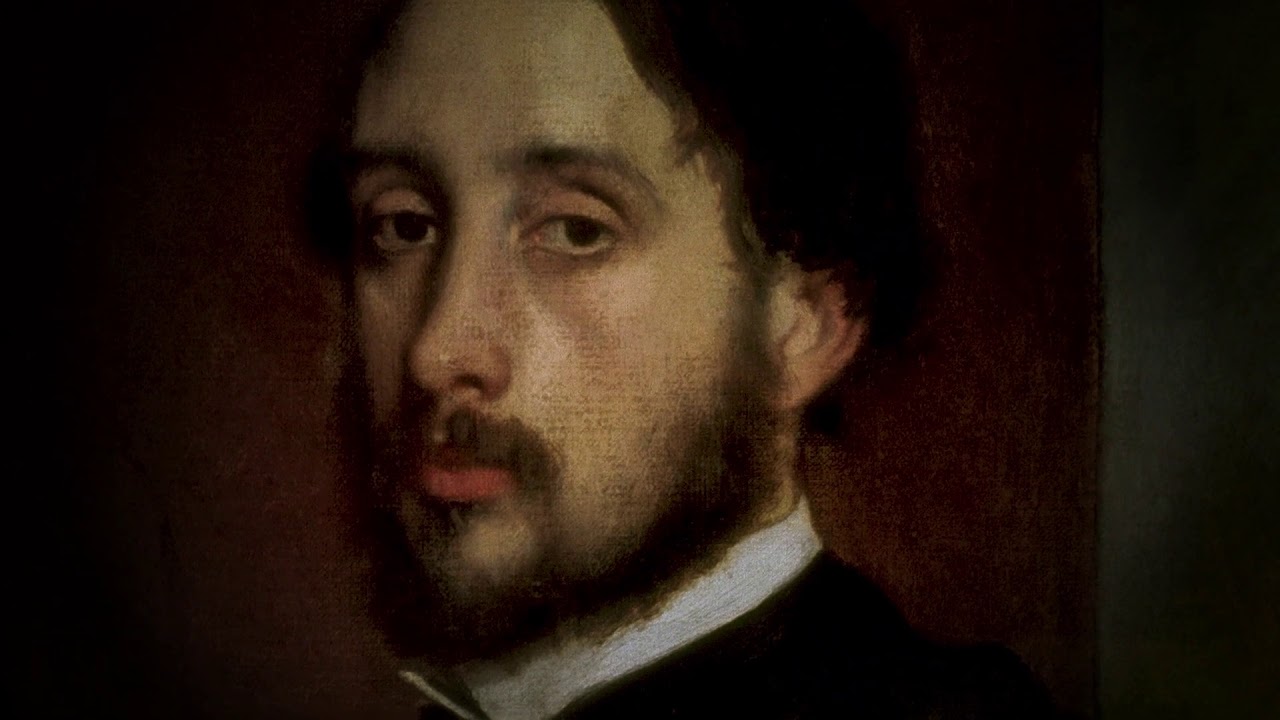
Pablo Picasso
"Not everyone can paint like Picasso" is a well-known expression. The painter, who was born in Spain, went to Paris as a young man and developed a fondness for Fauvism through his relationship with Matisse. This meant a withdrawal of pure and strong shapes and colors. His first work of its kind, Les Demoiselles d'Avignon is world famous today. At first, not even his friends could understand the deeper meaning of it.
The Spanish artist led a creative life, later becoming one of the most influential famous painters of the XNUMXth century. He not only painted pictures, but was also a sculptor, poet, playwright. And all of this on top of the myriad of other activities of his.
This famous lord of women became famous not only for the frequent change of muses, but also for the frequent change in artistic directions. At the beginning of the XNUMXth century, he created many works in the «African style», when instead of faces he painted masks of exotic tribes, then there was cubism, and also abstractionism and surrealism.
The pinnacle of his work can be called Guernica, dedicated to the city destroyed by war, a symbol of suffering and barbarism. It was Picasso who came up with the idea of combining full face and profile in portraits, dividing objects into simple figures, bringing them together in amazing shapes.
He changed the entire landscape of fine art, enriching it with revolutionary ideas. Like Cézanne, he began to use color as form (cubism), including in his sensational depictions of the Spanish civil war in Guernica.
In 1970, the work was used for a protest against the Vietnam War and, like Picasso's dove of peace, which he designed for the World Peace Congress in Paris in 1949, left an imprint of eternity. The well-known painter was world famous during his lifetime, however he did not get the posthumous recognition he deserved.

Anders Zörn
Anders Zorn is a Swedish painter and engraver born in Mora. He studied at the Royal Swedish Academy of Arts in Stockholm, Sweden, from 1875 to 1880. In 1880, Anders Zorn revealed a portrait of a grieving child during an exhibition, which launched his career and allowed him to have many commissions. He later enjoyed international success and became one of the most acclaimed portrait painters of his time.
At the turn of the XNUMXth century, Anders Zorn's success rivaled that of the most famous artists of his time, including John Singer Sargent. His models include three US presidents: Grover Cleveland, William Taft (portrait still in the White House today), and finally Theodore Roosevelt in print form. Anders Zorn is also famous for his plein-air nude paintings and vivid depictions of water.
Some of his most important works can be seen in the National museum (National Museum of Fine Arts) in Stockholm. Among them is the Danza de San Juan (1897), a performance by dancers in the evening light of a rural celebration of Saint John's Day. Therefore he is among the famous American painters.
Rembrandt van Rijn
Rembrandt Harmenszoon van Rijn (1606 – 1669) is a Dutch artist of the Baroque period. His work in the XNUMXth century fell during the Golden Age in the Netherlands. He shaped the world of art in particular through the series of self-portraits of him. He was particularly inspired by Caravaggio's light and dark painting, which gives his painting special contrasts. Due to his versatility, he is widely considered the greatest visual artist in the history of art.
His versatility allowed him to paint everything from landscapes and portraits to historical events and biblical scenes. One of his most popular works, The Night Watch (1642), is now in the State Museum in Amsterdam. The painting has special qualities that make it stand out: its size, the play of movement that is common to us in a military portrait, and the use of light and shadow, in which the famous painter was especially skilful.
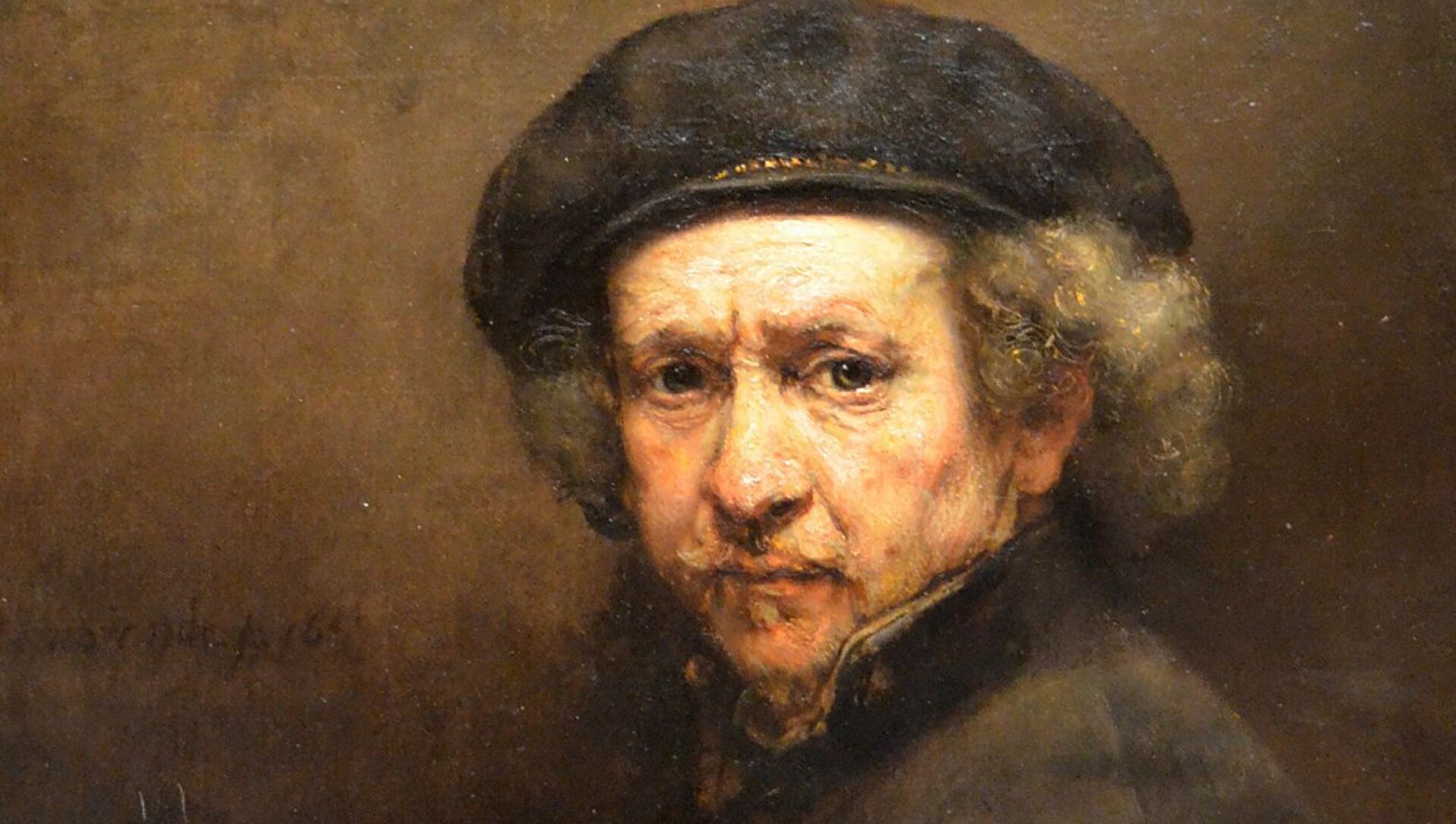
Rembrandt portrayed the world as it was, without embellishment or varnish, but he did it very mentally. In Rembrandt's canvases there is a twilight from which figures emerge illuminated by a golden light. Beautiful in its naturalness, as can be seen in the characters in his painting "The Jewish Bride".
The fate of the greatest Dutch painter is like a springboard: from obscurity to rise to wealth and popularity, only to fall and die in poverty. His contemporaries did not understand him; Rembrandt represented human feelings and experiences, which was not at all fashionable, however he is today one of the famous painters in the world.
Leonardo da Vinci
When Leonardo Da Vinci is named, one thinks directly of the Mona Lisa. Today it is probably the most famous portrait in the world. The lady with the mysterious smile, identified as Lisa del Giocondo (Giocondo's wife), provokes repeated discussions and inspires the imagination of filmmakers.
With his anatomical studies and drawings of weapons technology, he was even able to inspire the most powerful man of his time, Duke Ludovico Sforza of Milan, and win him over as a patron. Paintings such as the Virgin of the Rocks or the Lady with an Ermine show his preference for a cautious look at women and their skilful handling of color.
Only at the Last Supper should he have painted on wet plaster. The colors of the murals would have been paler after drying, but more stable. That said, it's a wonderful testament to his masterful use of central perspective.
Leonardo da Vinci was a painter, sculptor, mathematician, and inventor who also engaged in research in architecture, science, music, engineering, astronomy, geology, and many other fields. That is why he received the name "Renaissance Man", since he possessed knowledge in almost all areas available at that time.
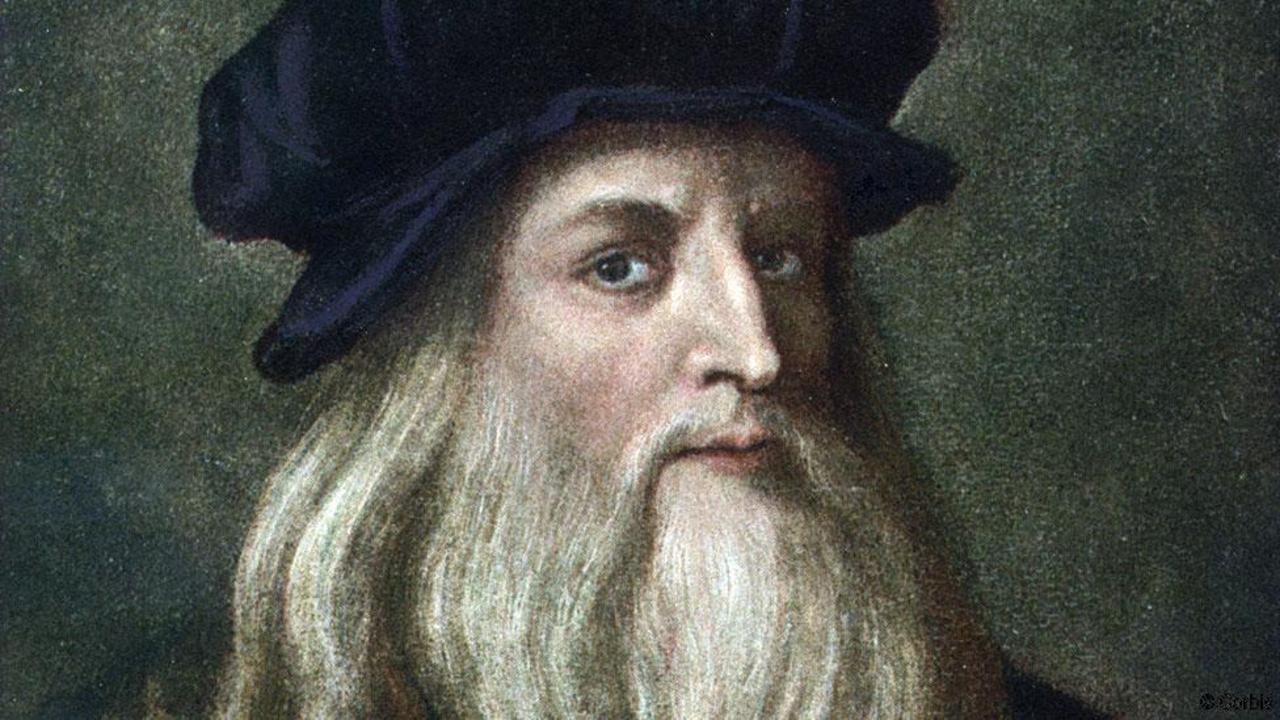
Thanks to his paintings, world painting has reached a new level of quality. He moved towards realism, understanding the laws of perspective and understanding the anatomical structure of a person. He depicted ideal proportions in the drawing «Vitruvian Man». Today it is considered both an artistic masterpiece and a scientific work. By far he is among the famous painters of the Renaissance.
Sandro Botticelli
Sandro Di Mariano Filipepi, or simply called Botticelli, was an Italian painter who was born in 1445 and died in 1510. Botticelli was originally a gold pan, but later learned to paint in various Italian artists' studios.
In 1481 he was commissioned by Pope Sixtus IV to decorate the Sistine Chapel. Together with Cosimo Rosselli, Domenico Ghirlandaio and Perugino, Botticelli subsequently shaped the history of Italian painting. His works are still admired by thousands of visitors every day.
Joaquin Sorolla y Bastida
Joaquín Sorolla y Bastida is a Spanish painter, born in Valencia, who stands out in painting portraits, as well as landscapes of his native country, especially the coast, whose light and human presence play a privileged role. A trip to Paris in 1894 brought him into contact with Impressionist painting and brought about a revolution in his style.
In the most typical style of Sorolla, the technical design is then impressionistic, and is marked by the presence of the human figure, children, women in dresses, against a beach or landscape background, where reflections, shadows, transparencies, the intensity of the light and the color of the image play a fundamental role in the enhancement of the subjects. Joaquín Sorolla is a very active artist, who also painted many portraits of Spanish personalities.
His pleasant and easy style allows him to receive endless requests, so he enjoys a comfortable social position. His fame crossed the Spanish borders and spread throughout Europe and the United States, where he exhibited on several occasions.
By the turn of the century, Sorolla was recognized as one of the greatest living famous painters in the Western world, receiving numerous gold medals at several major international exhibitions. Much of his work is exhibited at the Sorolla Museum in Madrid where an exhibition is dedicated to him.
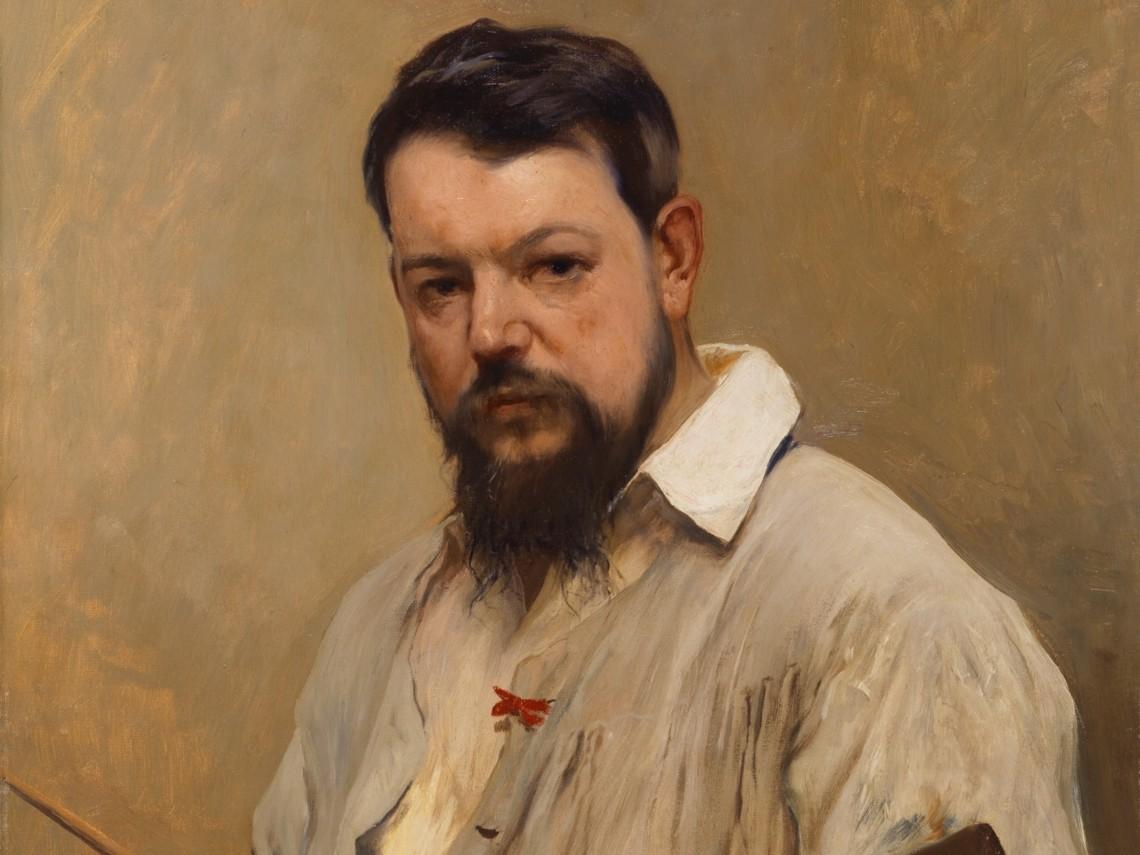
Andy Warhol
Andy Warhol was an American visual artist who is best known for his style called Pop Art. In his works, he explored the relationship between the glamorous film industry, advertising, popular culture, and artistic expression. Warhol is at the head of the famous painters in mass culture.
His most famous work is Campbell's Soup Cans (1962), which consists of 32 pieces, each 51 centimeters high and 41 centimeters wide. Each of the elements can be considered a separate image. The individualized pieces were made using semi-automatic screen printing, which greatly contributed to the development of pop art and the convergence of popular culture with visual art as we know it today.
Andy Warhol created dozens of works and was one of the leading cultural merchants of the 50s. However, in the mass consciousness, he will almost certainly remain the author of canvases with reproduced identical objects: in one case, such an object was a can of canned tomato soup, and in the other, the sex symbol of the years XNUMX and the symbol of the sexist era of Hollywood, Marilyn Monroe.
Vincent Van Gogh
Vincent Van Gogh is one of the most renowned famous painters, which is amazing, as his expressive and emotional style of painting found little enthusiasm in his time. The Post-Impressionist's crude brushstrokes and application of impasto paint, as well as his always colorful but still cautious choice of colours, are once again highly valued today and are traded at the world's most expensive auction houses.
His choice of motifs was unspectacular, furniture, flowers, landscapes, and a multitude of self-portraits. However, it is mainly thanks to the marketing of American art lovers that he likes his yellow sunflower series, his vision of the Cafe Terrace at Night, The Starry Night and his bedroom that they are found on posters, postcards and posters. even key rings.
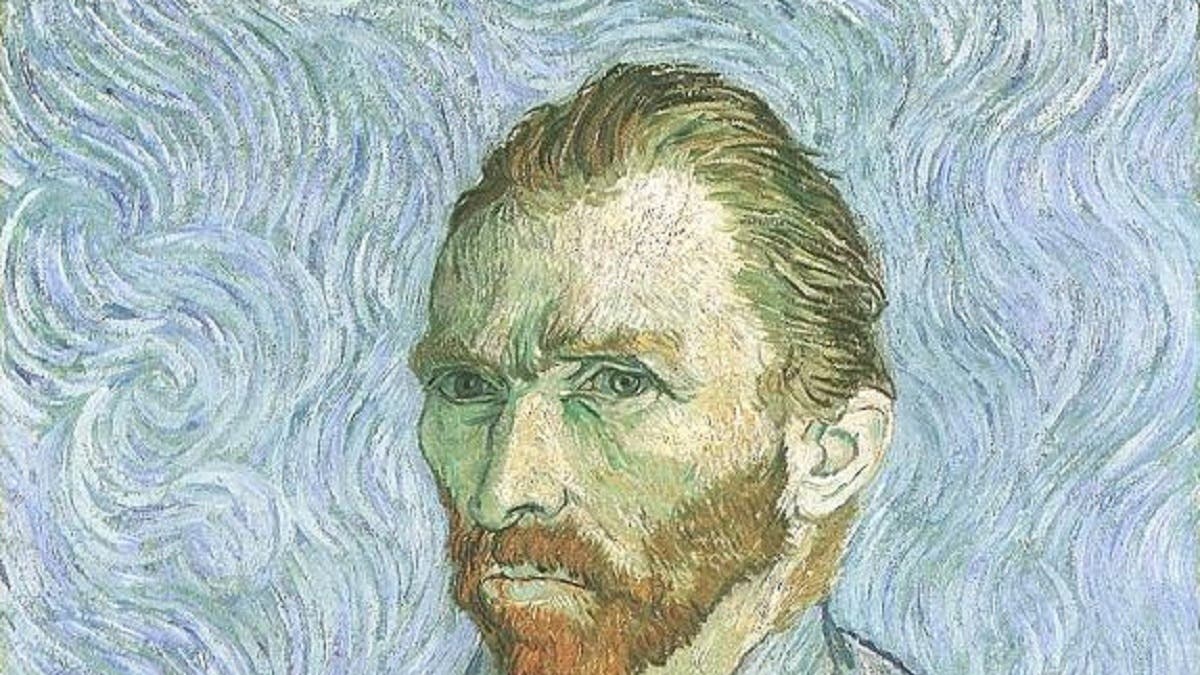
Whether it's his expressive portraiture or even the mystery of his severed ear and death reportedly resulting from a much-discussed suicide attempt, his name is at the top of the list of famous painters of all time.
At first, Van Gogh's paintings were somber. In them, he expressed boundless sympathy for the poor. And his first masterpiece was just such a work: "The Potato Eaters." In it we see people tired of hard and monotonous work. So tired that they themselves became like potatoes. Van Gogh was not realistic and exaggerated the features of people to convey the essence.
But viewers love Van Gogh for his light and bright colors. His paintings became colorful after meeting the Impressionists, since then, he has painted many bouquets, summer fields and blossoming trees.
No one before Van Gogh expressed his emotions and feelings with the help of color, but after him - many. After all, he is the main inspirer of all expressionists. It is even surprising how a teacher, who is in a deep depression, which will lead him to suicide over the years, painted a work as cheerful as "Sunflowers".
The Starry Night (1889) is one of his most famous works, painted during his stay in a psychiatric hospital in France. It depicts a window view of a fictional town, over which a bright yellow sun rises.
This is one of the most recognizable paintings not only in the art world, but in the entire world. But true fame came to the artist after his death in the late 1890s. Now his work is considered one of the most expensive in the world and he is among the most famous famous painters.
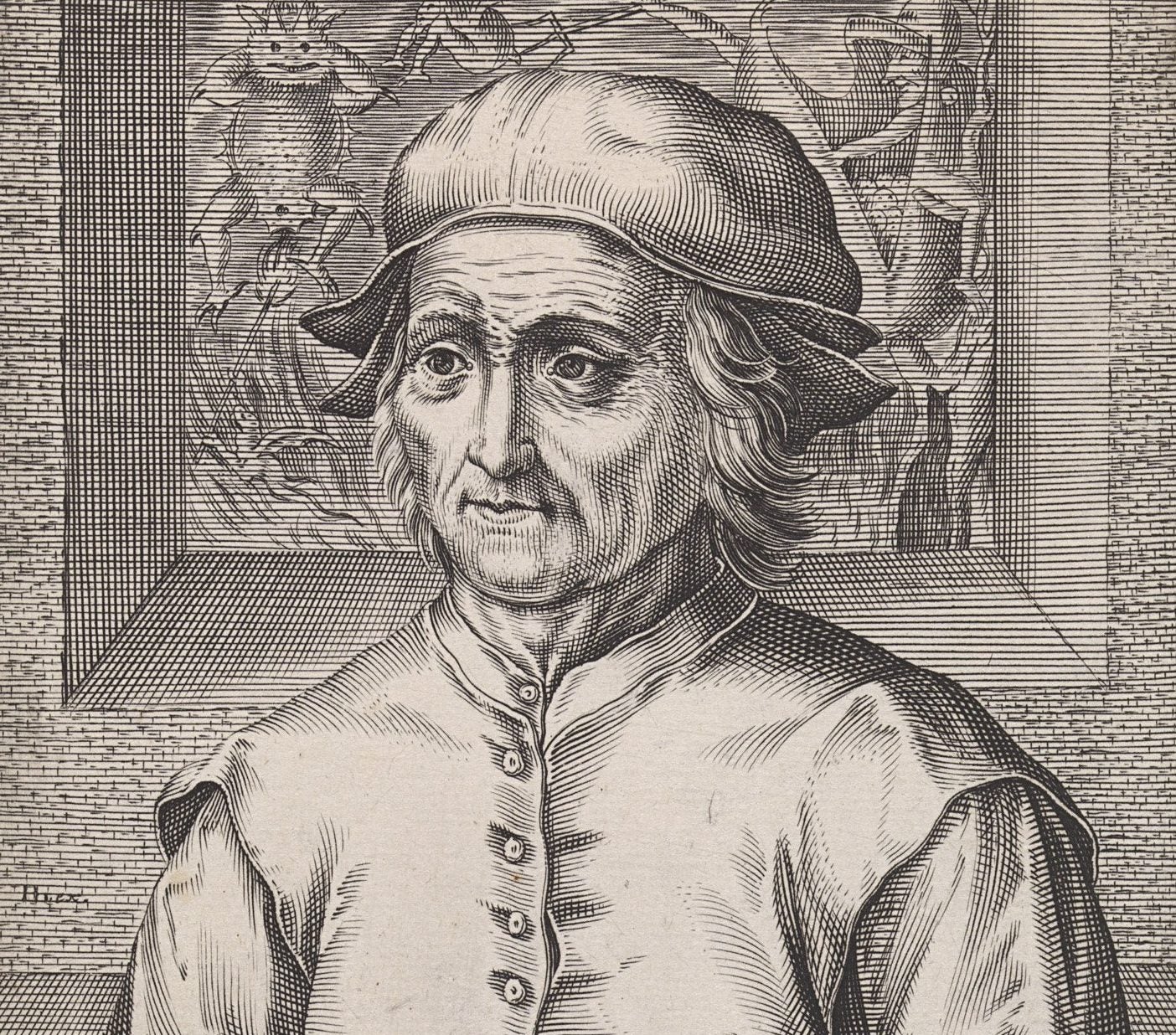
Jheronimus van Aken – Hieronymus Bosch
One of Northern Europe's leading Renaissance artists is Jheronimus van Aken, known in Spanish as El Bosco. The form of the painting by him is certainly recognizable, even though only a dozen or so of the entire body of paintings remain. He was a true Renaissance artist, multifaceted and full of symbols and allusions.
His paintings said much more to Bosch's contemporaries than to the people of the XNUMXst century, since he used biblical and medieval folk motifs abundantly. You don't have to be an art critic to understand that this is a Bosch painting.
For example, in Hieronymus Bosch's most famous work, the triptych "The Garden of Earthly Delights," contains many details: it describes the seven deadly sins, reproduced several times, it tells in great detail about the infernal torments that await sinners ( on the right side). Here the master set out to frighten both the peasant and the contemporary cult with oppressive visions that awaited after death.
On the left the window shows the fall of Adam and Eve. Half human, half mutant, huge birds and fish, unprecedented plants and multitudes of naked sinners. All of this is mixed and interwoven in multi-figure compositions. The whimsy of the figures, a large number of small details and the specific imagination of the artist leave no doubt as to who the author of the canvas is. He certainly one of the famous painters of all time.
There is no other artist who uses so many details to express ideas. What ideas? There is no consensus on this issue. They dedicated dissertations and books to El Bosco, they searched for interpretations of his characters, but they did not reach a conclusion.
But Bosch was evolved throughout his career. And by the end of his life, large-scale, multi-figure works were replaced by a very close approach to characters. So they barely fit in the frame. This is what is noticeable in Christ with the Cross on his back. Regardless of whether Bosch examines his characters from afar or up close, his message is the same. He shows human vices and by showing them he tries to help us save our souls.
paul rubens
The Flemish painter Pieter Paul Rubens (1577-1640) is one of the greatest painters of his time. Since so many painters wanted to work for him, Rubens had one of the largest painting studios of his time. He painted numerous portraits and religious paintings such as the "Descent from the Cross" and inspired other painters around the world. He is considered the master of Flemish Baroque painting and is deservedly among the famous painters of the Netherlands.

Raphael sanzio
The most famous representative of the Renaissance era amazes with harmonious compositions and lyricism. Painting attractive people is not as difficult as placing them correctly on the canvas. This is where Raphael was a virtuoso. Perhaps no other teacher in the world influenced his colleagues as much as Rafael.
Your painting style will be exploited relentlessly. His characters wander from one century to another and will lose their relevance only at the beginning of the XNUMXth century. In the age of modernism and avant-garderemembering Raphael Sanzio, we first think of the beautiful Madonnas from him.
During his short life (38 years), he created twenty paintings with his image, this has not been common. The most famous is the Sistine Madonna (Madonna di San Sisto). We do not see a dry iconographic virgin, but a tender mother, full of dignity and spiritual purity. The mischievous angels are such a faithful portrait of childlike spontaneity, full of charm.
Raphael Sanzio's most expensive work was the surprisingly sketchy "Head of a Young Apostle." It sold at Sotheby's for forty-eight million dollars. The Italian painter, appreciated by his contemporaries for his softness and naturalness, is priceless today and is one of the most highly valued famous painters.
Francisco de Goya
Francisco de Goya (1746-1828) is a great Spanish artist of the Rococo period and at the same time one of the pioneers in the field of contemporary painting in Europe. It is known that Goya painted Spain as it was in his time, as a true contemporary witness. His favorite themes are critical representations of war and injustice, as well as images of everyday life in Spain.
Goya began his career with youthful fervor and idealism. He even became a painter to the Spanish court. But he soon got fed up with that life, seeing the world's greed, stupidity, bigotry. Just look at the group of him Portrait of the Royal Family, where Goya didn't even try to soften the empty expressions and repulsive arrogance of the royal family.
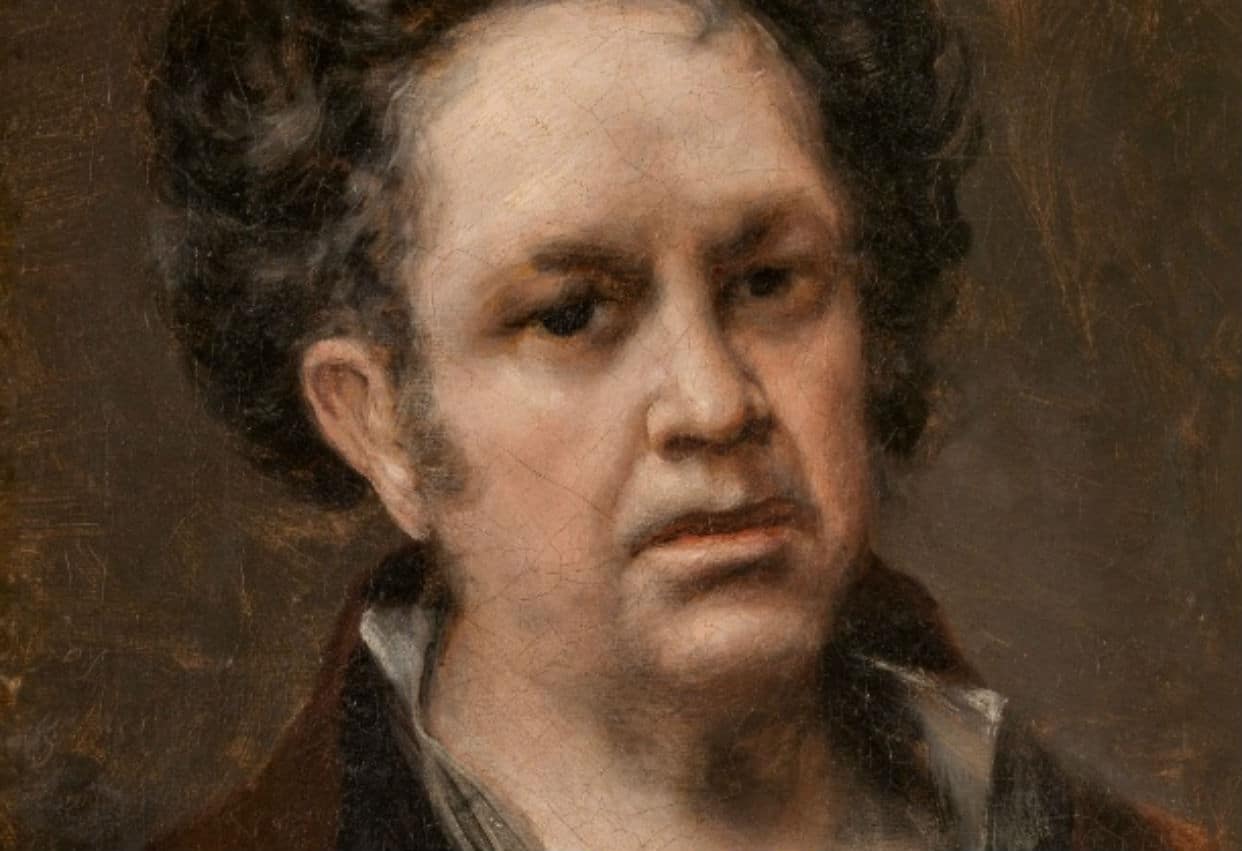
Goya created many canvases that reflect his civil and human position. And the world knows him above all as a daring artist, a lover of truth. The proof is simply the incredible work "Saturn devouring his son." This is a cold blooded and extremely honest interpretation of the mythological plot. This is how the insane Kronos should have looked, who is terrified that his sons will overthrow him.
Giotto di Bondone
Giotto di Bondone, is considered one of the first masters before the Renaissance, he was a universal talent: painter, architect and sculptor. A student of Cimabue and a friend of Dante, admired by Michelangelo, Giotto helped to modernize the pious image by moving away from the Byzantine tradition. Combining a return to antiquity, a sense of naturalism and acquired since the late Middle Ages, his art is fundamentally oriented towards the human being.
Giotto is said to be the author of the famous frescoes in the Upper Church of Assisi dedicated to the life of Saint Francis, although there is no document to prove it. He is also at the origin of one of the most beautiful achievements of the Trecento: the Scrovegni Chapel in Padua.
Giotto's art symbolizes the triumph of fresco, a technique that has remained in retreat from mosaic. He highlights highly codified and static Byzantine-style painting. Giotto innovates by representing the characters with realism, not necessarily on the anatomical level but on the level of feelings. His vision of the divine is not mystical or supernatural like Fra Angelico's, but instead turns to the human and the simplicity of earthly life.
Gustave Courbet
Gustave Courbet was a French realism painter. During his work, the artist tried to represent the world of his time and his contemporaries and even broke taboos and shocked people.
For example, with his work "The Origin of the World", which shows female genitalia and is now on display at the Musée d'Orsay. He quickly broke away from romantic works and turned the world of art upside down, since then belonging to the select group of famous painters.
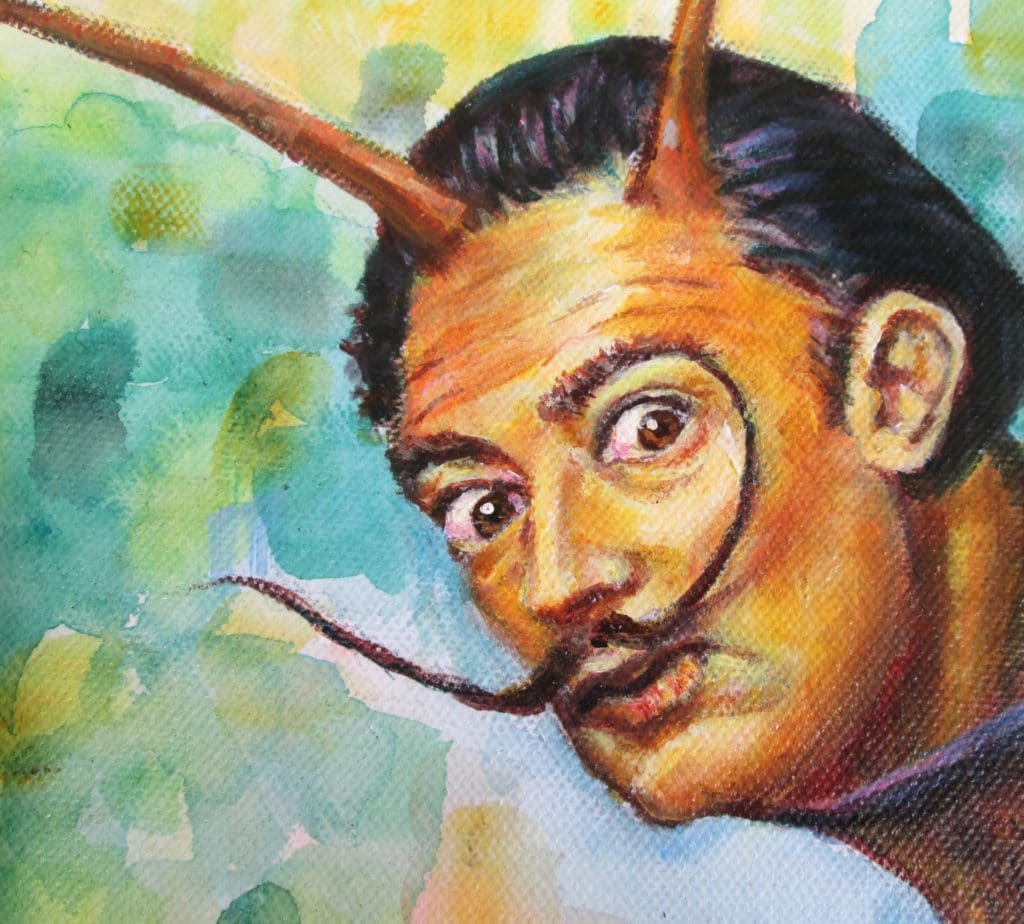
Salvador Dalí
Salvador Dalí (or Salvador Domingo Felipe Jacinto Dalí i Domènech), unmistakably recognizable for his psychedelic painting style, was born in 1904 and died in 1989. The great Spanish artist seduced the art world in a short time and became the representative figure of surreal current. His paintings show the most varied dreams, each one more confused than the other. Dalí is undoubtedly one of the most famous painters of the XNUMXth century.
Dalí is best known for his absurdly whimsical aesthetic. His art was an extension of himself, but given his Spanish expressiveness and love of attention, he was equally celebrated for his eccentric behavior. His most famous work is The Persistence of Memory (1931).
One of the interpretations of the image is how time begins to melt, as soon as a person falls asleep. When asked what exactly inspired Salvador Dalí to paint this painting, he replied that the shape of the melting clock was inspired by Camembert cheese melting in the sun.
Ivan Aivazovsky
Aivazovsky is rightfully ranked among the famous painters of the world. His «Ninth Wave» is amazing in its scale. The greatness of the elements, the hopelessness. Will the handful of storm survivors be able to escape? The morning sun with its warm rays seems to give a subtle hope. Aivazovsky can be called the most important marine painter of all time.
Nobody has painted the nature of the marine element in such a diverse way, nobody has depicted so many sea battles and shipwrecks. At the same time, Aivazovsky was also a documentary filmmaker, thoroughly describing the ship's equipment. And a little dreamy, in fact, on purpose, the Ninth Wave is painted incorrectly: in the open sea, a wave never bends like an apron. But for added drama, Aivazovsky painted her like this.
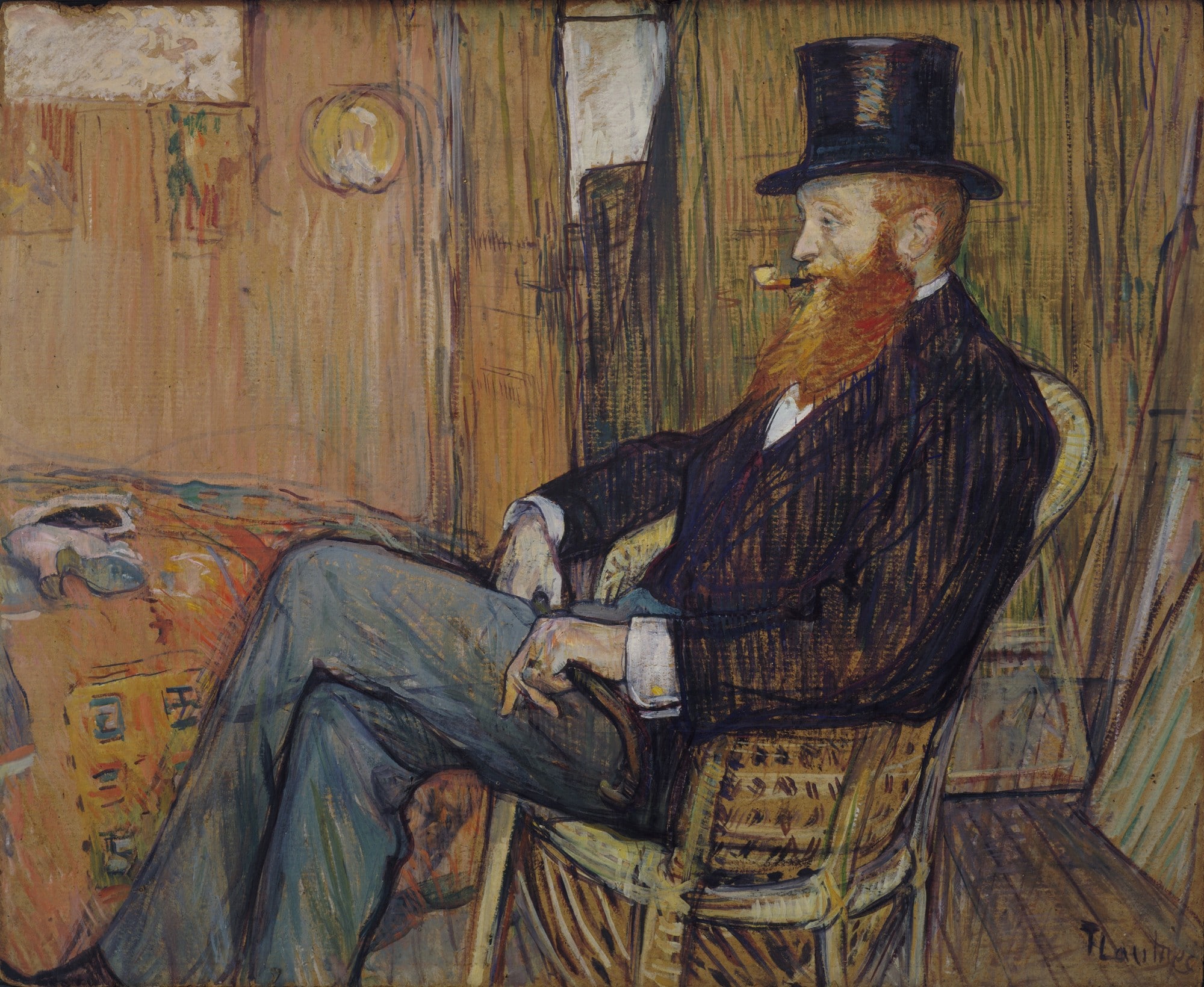
Henri de Toulouse-Lautrec
Henri de Toulouse-Lautrec, born in the south of France in 1864 and died in 1901 at the age of only 36, is a great artist who shaped life in Paris at the end of the XNUMXth century. The painter and cartoonist lives in the famous Parisian neighborhood of Montmartre, the artistic district of the French capital par excellence. Daily life in Paris is also one of his most popular motifs, whether it be a Parisian cabaret or red-light district scenes around the Moulin Rouge.
Marc Chagall
Marc Chagall was born in Belarus in 1887 under the name Moïche Zakharovich Shagalov, but received French citizenship in 1937. He died in 1985. Chagall does not quite fit the trends of the XNUMXth century, but uses elements of surrealism and primitivism. Today, Marc Chagall is part of numerous exhibitions on the great painters of the XNUMXth century.
Paul Klee
The famous artist Paul Ernst Klee was born in the canton of Bern in 1879 and died in 1940 in the Italian-speaking part of Switzerland, in Ticino. His father was German and his mother Swiss. The painter and graphic artist was not only very productive during his creative days, but also extremely diverse in his art and painting.
So his works can be assigned to completely different artistic movements: expressionism, constructivism, cubism, primitivism and surrealism. By the way, Paul Klee was a friend of Wassily Kandinsky and like him, Klee taught at the Bauhaus in Weimar from 1921 and later in Dessau. After the Nazis seized power, he was fired and returned to Bern.
Wassily Kandinsky
Among the famous painters it should be mentioned is Wassily Kandinsky. He was born in Moscow in 1866 and died in Neuilly-sur-Seine France in 1944. Together with other famous painters such as Paul Klee and Franz Marc he was part of the "Blauer Reiter" group of artists, and had even founded it together with Franz Marc, as counter-movement or derived from the Neue Künstlervereinigung München, (New Munich Artists Association).
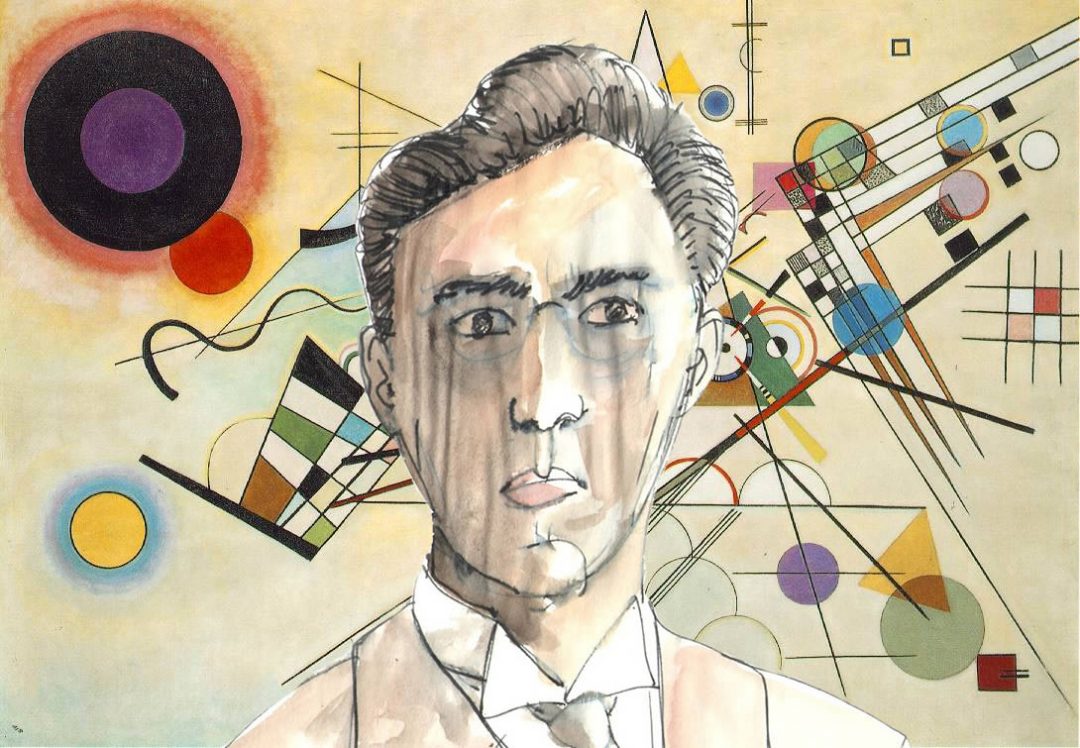
His style, therefore, can be assigned to expressionism. He was also one of the pioneers of abstract art along with other famous painters. As already mentioned, he also worked as a teacher at the Bauhaus in Weimar and also in Dessau, where he and Paul Klee were one of the residents of the Bauhaus Teachers' Houses. After the National Socialists closed the Bauhaus (1933), Kandinsky emigrated to France with his wife.
Eugène Delacroix
The French painter Eugène Delacroix saw the light in 1798 and died in 1863. He especially influenced the romanticism of the XNUMXth century. Among other things, the French state commissioned the painter to carry out numerous portraits, but he was also entrusted with architectural and decorative tasks. His painting “Liberty Leads the People” is one of the most famous in relation to the history of France and can now be admired in the Louvre in Paris.
Jackson Pollock
Jackson Pollock was an American painter and leader of abstract impressionism. He is among the painters famous for his unusual drip painting techniques, in which paint is poured or dripped onto the canvas. Pollock was known for his addiction to alcohol, which led to the car accident that took his life in 1956.
One of his most famous paintings, number 5, 1948, is one of the most expensive paintings in the world. Jackson Pollock showed great control and iron discipline in his chaotic way. The painting is now better known by the name "Bird's Nest", due to the colors gray, brown, yellow, white, convoluted with each other.
Gustav Klimt
He was an Austrian Symbolist painter best known for his work on overt eroticism, various murals, sketches, and still lifes. In addition to depicting the female body, Klimt also painted landscapes and scenes, partly influenced by Japanese art.
One of his most famous works is The Kiss, one of the great works of his golden age. This period of his work was noted for the spectacular use of gold tones in his most striking paintings, often using real gold leaf.

Kazimir malevich
Interestingly, the most famous Russian artist can be called Kazimir Malevich. Despite the fact that the Russian school of painting gave art dozens of names (Repin, Aivazovsky, Vereshchagin and many others) in the memory of the mass viewer, one person remained who was more a deconstructor of classical painting than a successor of his traditions becoming one of the famous painters of his medium.
Kazimir Malevich was the founder of Suprematism, which means, in a way, the father of all contemporary art. His work Black Square was exhibited in 1915 and became programmatic. But Malevich is not among the famous painters not only because of Black Square: he worked as a production designer on Meyerhold's grotesque performances, ran an art studio in Vitebsk, where another great artist, Marc Chagall, began work.
Jean-Francois Millet
The work of the French painter Jean-François Millet is part of the realist movement. His drawings and canvases depict everyday life, mostly rural scenes from Northern Europe. His peasant background predisposes him to present rural existence as a universal way of life and idealize humanity. He shows French peasants radiating an inner nobility.
His paintings, wrongly considered as a political position in favor of the people, only reflect his personal experience and his attachment to the rural world. The painter's interest in common people will fascinate artists such as Pissarro, Monet and Van Gogh.
His style, especially his light palette, vigorous stroke, and predilection for pastels, profoundly influenced Impressionism. Jean-François Millet lived in relative poverty and made a living painting portraits. His son and his grandson are landscapers.
John singer sargent
John Singer Sargent established himself as one of the greatest American portrait painters of his time, also recognized as a gifted landscape painter and great watercolourist. Sargent was born in Florence, Italy, to American parents and studied in Italy and Germany, then in Paris, under the influence of the portrait painter Emile Auguste Carolus-Duran, whose influence will be fundamental. He is close to great artists of the time like Claude Monet or Paul Helleu.
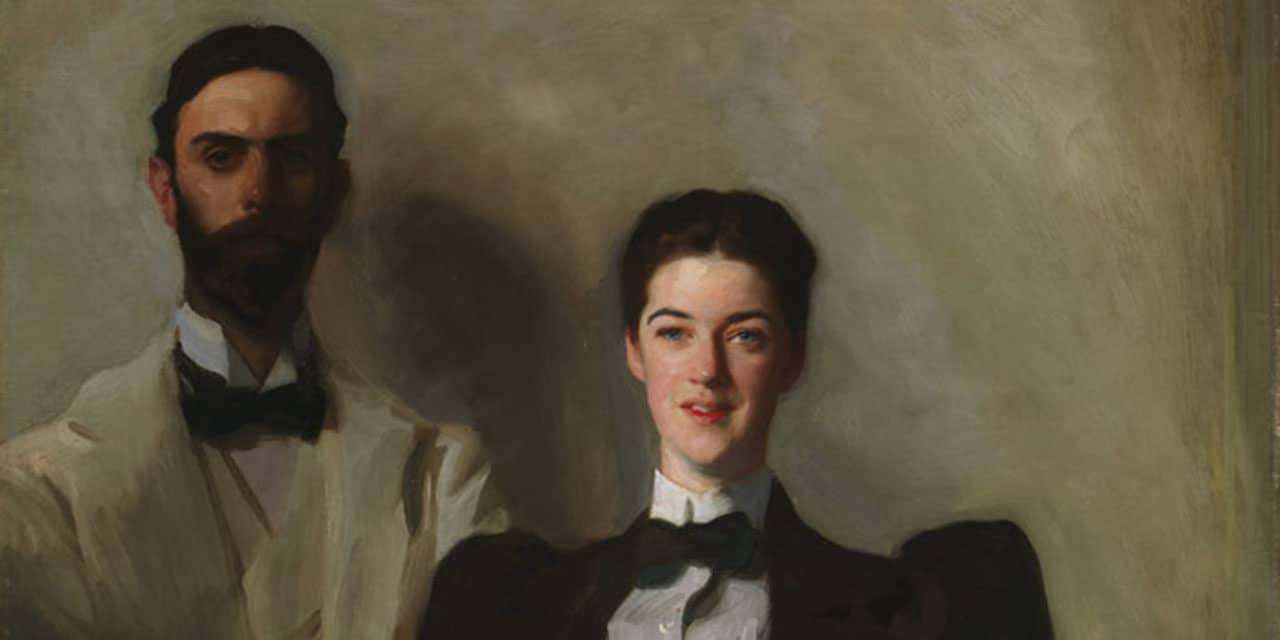
At the turn of the century, John Singer Sargent was the portrait painter of the rulers and upper classes in Europe and the United States of America. The portraits of him, of flattering verisimilitude, restore the image of a society. The most representative portraits of Sargent show the uniqueness and personality of his models. His style is marked by a uniformity of excellence that surprises even some of his detractors.
In 1907 he announced that he would stop taking portraits and then concentrated on landscapes and scenes of military life during the First World War. During his career he created around nine hundred canvases and more than two thousand watercolors, as well as innumerable sketches and drawings.
Here are some links of interest: